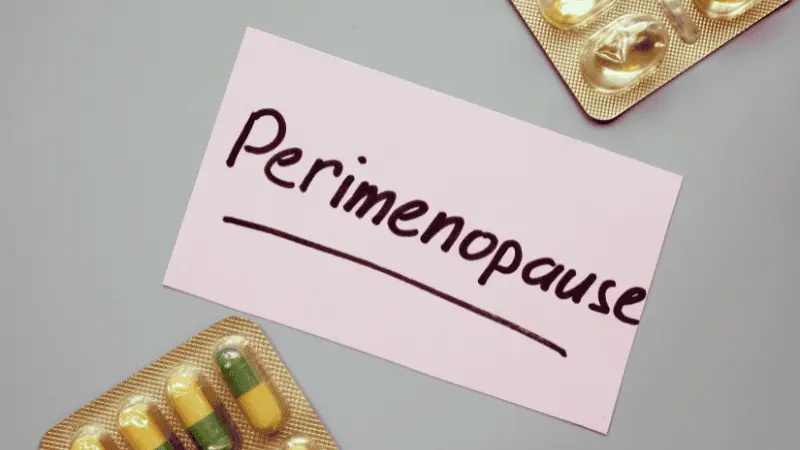As women approach midlife, their bodies undergo a natural transition toward menopause. This phase, called perimenopause, can bring various changes that might seem confusing or concerning. At EG Healthcare, we often meet patients who are unsure if they’ve entered this stage. To help you better understand your body, here’s a comprehensive guide on the top 10 signs of perimenopause and actionable tips to manage them.

What is Perimenopause?
Think of perimenopause as the “warm-up act” before menopause takes center stage. It’s the transitional period when your body begins to produce less estrogen, leading to various changes. This phase typically starts in your 40s but can begin as early as your 30s and lasts until menopause, usually around age 51.
During this time, your body starts to produce less estrogen, which can lead to a variety of changes. It’s like your body is slowly turning down the dial on your reproductive system. Understanding what to expect can make navigating this journey much smoother.
Top 10 Signs Of Perimenopause to Watch For
1. Your Periods are Playing Hide and Seek
Your once-predictable periods may become unpredictable. Cycles might be longer, shorter, heavier, lighter, or even skip months. These changes occur as your ovaries reduce estrogen production, disrupting your menstrual rhythm.
What You Can Do: Keep track of your periods using a period tracker app or calendar. Share this information with your doctor to monitor any significant changes.
2. Hot Flashes
Hot flashes are sudden waves of intense heat that may leave you feeling flushed and sweaty. They result from hormonal fluctuations that confuse your brain’s temperature regulation.
What You Can Do: Dress in layers, avoid known triggers like spicy foods, and keep a small fan handy. Identifying triggers can help minimize episodes.
3. Night Sweats
Waking up drenched in sweat? Night sweats are the nocturnal counterpart to hot flashes and can significantly disrupt your sleep.
What You Can Do: Keep your bedroom cool, use moisture-wicking sheets, and drink cold water before bed. Breathable pajamas can also help.

4. Mood Swings
Fluctuating hormones can lead to emotional rollercoasters. You might experience irritability, sadness, or sudden shifts in mood without clear triggers.
What You Can Do: Practice stress management techniques like yoga, meditation, or deep breathing. Regular exercise and adequate sleep can help stabilize your mood.
5. Vaginal Dryness
Lower estrogen levels can cause thinning and dryness of vaginal tissues, leading to discomfort during intimacy and an increased risk of urinary tract infections.
What You Can Do: Use over-the-counter lubricants or vaginal moisturizers. For persistent discomfort, consult your healthcare provider about other treatments.
6. Sleep Troubles
Hormonal changes can disrupt your ability to fall asleep or stay asleep. Night sweats and stress may worsen these issues.
What You Can Do: Establish a consistent bedtime routine, limit screen time before bed, and consider relaxation techniques like reading or listening to calming music.
7. Weight Gain
Many women notice weight gain during perimenopause, especially around the waistline. Hormonal shifts and a slower metabolism often contribute to this.
What You Can Do: Focus on a balanced diet with whole foods, lean proteins, and vegetables. Incorporate strength training exercises to boost metabolism and maintain muscle mass.
8. Brain Fog
Memory lapses, difficulty concentrating, or struggling to find the right words are common during perimenopause. These issues often stem from fluctuating hormones.
What You Can Do: Stay mentally active with puzzles, learning new skills, or reading. Use reminders and notes to stay organized, and ensure you’re getting enough sleep.
9. Headaches
Hormonal fluctuations during perimenopause can trigger headaches or worsen existing migraines, especially around your period.
What You Can Do: Maintain a headache diary to track patterns and triggers. Over-the-counter pain relievers may help, but consult your doctor if headaches become severe.
10. Changes in Libido
Perimenopause may bring changes in your sex drive, either increasing or decreasing due to factors like mood shifts, fatigue, or vaginal discomfort.
What You Can Do: Open communication with your partner is key. If vaginal dryness is an issue, try lubricants or consult your doctor for solutions.
You’re Not Alone on This Journey
Every woman’s experience with perimenopause is unique. You might experience all these signs, just a few, or even others not listed here. The important thing to remember is that perimenopause is a natural part of life – it’s not a disease but a transition to the next phase of womanhood.
What’s Your Next Step?
If you’re experiencing signs of perimenopause, consult with your healthcare provider to confirm and discuss management strategies. At EG Healthcare, we’re here to guide you through this stage with personalized care and expert advice.